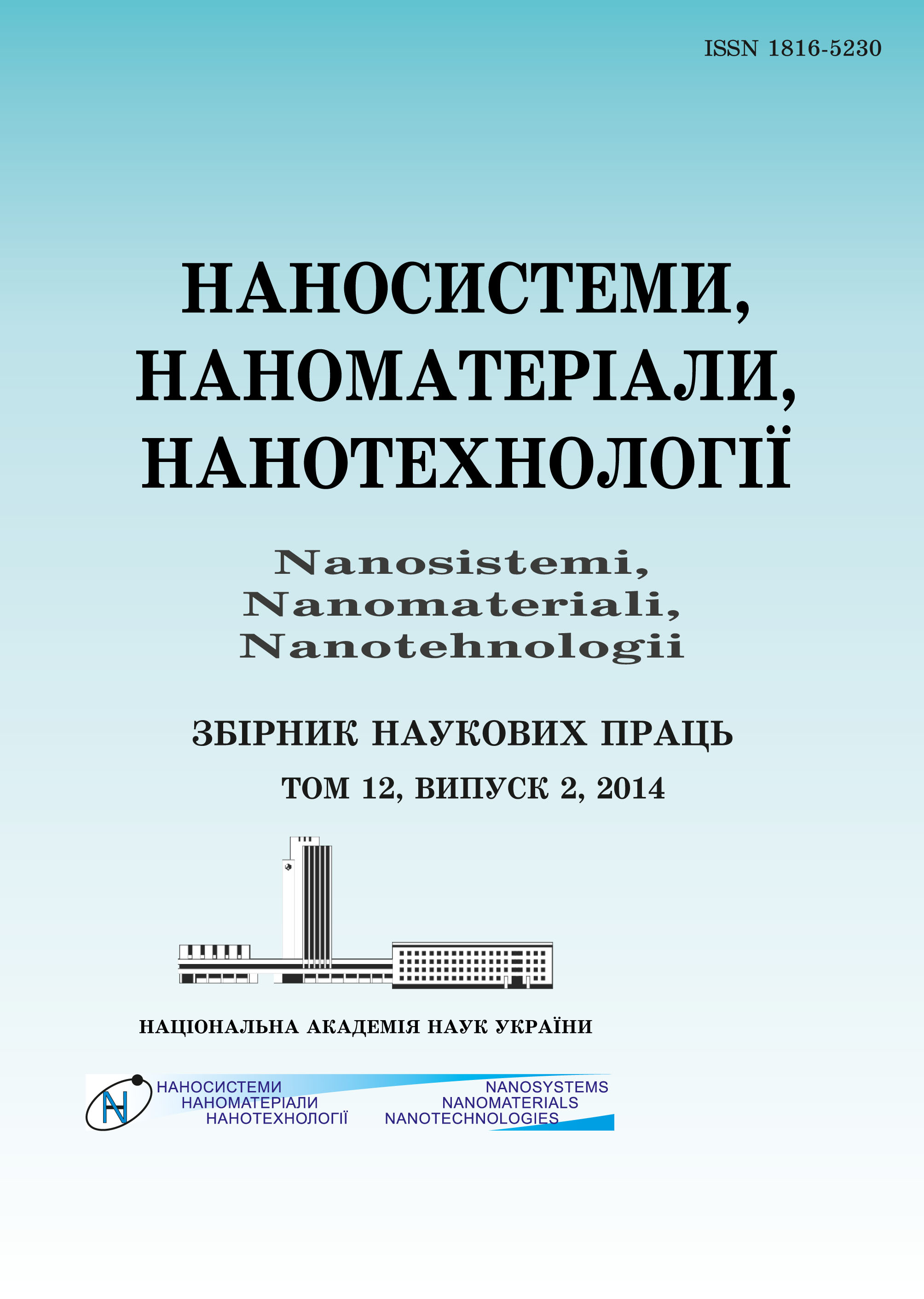|
|
|||||||||
 |
Year 2021 Volume 19, Issue 1 |
|
|||||||
|
|||||||||
Issues/2021/vol. 19 /Issue 1 |
Bedreddine Maaoui, Yacine Aoun, Said Benramache
«Impact of Deposition Rate on the Structural, Optical, and Electrical Properties of Zinc Oxide (ZnO) Thin Films Prepared by Solar Spray Pyrolysis Method»
0167–0176 (2021)
PACS numbers: 61.05.cp, 78.66.Hf, 78.66.Jg, 78.67.Bf, 81.05.Dz, 81.15.Rs, 81.40.Rs
In the present research, thin films of zinc oxide (ZnO) are elaborated by solar spay pyrolysis method with using solar energy to heat glass substrate at 450\(^{\circ}\)C in ambient atmosphere without any special conditions. This method was developed in our laboratory using simple tools. The zinc acetate with a molarity of 0.1 M was sprayed with deferent deposition rates (7, 11 and 13 ml). The effect of such depositions on the structural, optical, and electrical properties is examined by using x-ray diffraction (XRD), ultraviolet and visible spectroscopy, and four-point probe method, respectively. The analysis of properties shows that ZnO films are polycrystalline with the preferential orientation (002) and are crystallized in the wurtzite-phase type. The grain size increases to 23 nm, then decreases until it reaches 16 nm. The direct band-gap value decreases from 3.30 to 3.28 eV, when the thickness increases from 126 to 148 nm. As revealed, the conductivity varies with film thickness.
Keywords: ZnO, thin films, deposition rate, solar spray pyrolysis technique
https://doi.org/10.15407/nnn.19.01.167
References
1. K. Davis, R. Yarbrough, M. Froeschle, J. White, and H. Rathnayake, RSCadvances, 9: 14638 (2019).2. S. K. Sahoo, C. A. Gupta, and U. P. Singh, Journal of Materials Science:Materials in Electronics, 27: 7161 (2016).
3. T. Logu, P. Soundarrajan, D. Naveena, K. Sankarasubramanian,S. S. Kumar, and K. Sethuraman, Solar Energy, 177: 108 (2019).
4. E. Karimi and S. M. B. Ghorashi, Journal of Electronic Materials, 49: 364(2020).
5. S. Benramache, Annals of West University of Timisoara - Physics, 61, Iss. 1:64 (2019); DOI: 10.2478/awutp-2019-0006
6. H. Belkhalfa, H. Ayed, A. Hafdallah, M. Aida, and R. T. Ighil, Optik, 127:2336 (2016).
7. S. Benramache, Y. Aoun, A. Charef, B. Benhaoua, and S. Lakel, Inorganicand Nano-Metal Chemistry, 49: 177 (2019).
8. A. A. Ramirez, I. Gil, G. Gordillo, and A. M. Latifi, Thin Solid Films, 698:137846 (2020).
9. M. H. Suhail, I. K. Adehmash, S. M. A. Kareem, D. A. Tahir, and O. G. Abdullah, Transactions on Electrical and Electronic Materials, 21:355 (2020); https://doi.org/10.1007/s42341-020-00182-3
10. S. Saini, P. Mele, T. Oyake, J. Shiomi, J.-P. Niemela, M. Karppinen et al.,Thin Solid Films, 685: 180 (2019).
11. Y. Aoun, R. Meneceur, S. Benramache, and B. Maaoui, Physics of the SolidState, 62: 131 (2020).
12. E. Andrade and M. Miki-Yoshida, Thin Solid Films, 350: 192 (1999).
13. K. Sandeep, S. Bhat, P. Kumar, S. R. Maidur, F. J. Serrao, andS. Dharmaprakash, Physica E: Low-Dimensional Systems and Nanostruc-tures, 107: 47 (2019).
14. T. P. Rao and M. Santhoshkumar, Applied Surface Science, 255: 4579(2009).
15. O. Bazta, A. Urbieta, J. Piqueras, P. Fernandez, M. Addou, J. Calvino etal., Ceramics International, 45: 6842 (2019).
16. S. Susilawati, A. Doyan, L. Muliyadi, and S. Hakim, Jurnal Penelitian Pen-didikan IPA, 6: 1 (2020).
17. F. Khediri, A. Hafdallah, and M. Bouhelal, Defect and Diffusion Forum,397: 81 (2019); https://doi.org/10.4028/www.scientific.net/ddf.397.81
18. K. Salim, M. Medles, A. Nakrela, R. Miloua, A. Bouzidi, and R. Desfeux,Optik, 210: 164504 (2020) ; https://doi.org/10.1016/j.ijleo.2020.164504
19. A. K. Ambedkar, M. Singh, V. Kumar, V. Kumar, B. P. Singh, A. Kumar,and Yo. K. Gautam, Surfaces and Interfaces, 19: 100504 (2020); https://doi.org/10.1016/j.surfin.2020.100504
20. A. R. Hegazy, B. Salameh, M. Mathai, and A. Alsmadi, Ceramics Interna-tional, 46, Iss. 9: 13151 (2020); https://doi.org/10.1016/j.ceramint.2020.02.089
21. S. Benramache, Y. Aoun, S. Lakel, and B. Benhaoua, Materials ResearchExpress, 6: 126418 (2019).
 This article is licensed under the Creative Commons Attribution-NoDerivatives 4.0 International License ©2003—2021 NANOSISTEMI, NANOMATERIALI, NANOTEHNOLOGII G. V. Kurdyumov Institute for Metal Physics of the National Academy of Sciences of Ukraine. E-mail: tatar@imp.kiev.ua Phones and address of the editorial office About the collection User agreement |